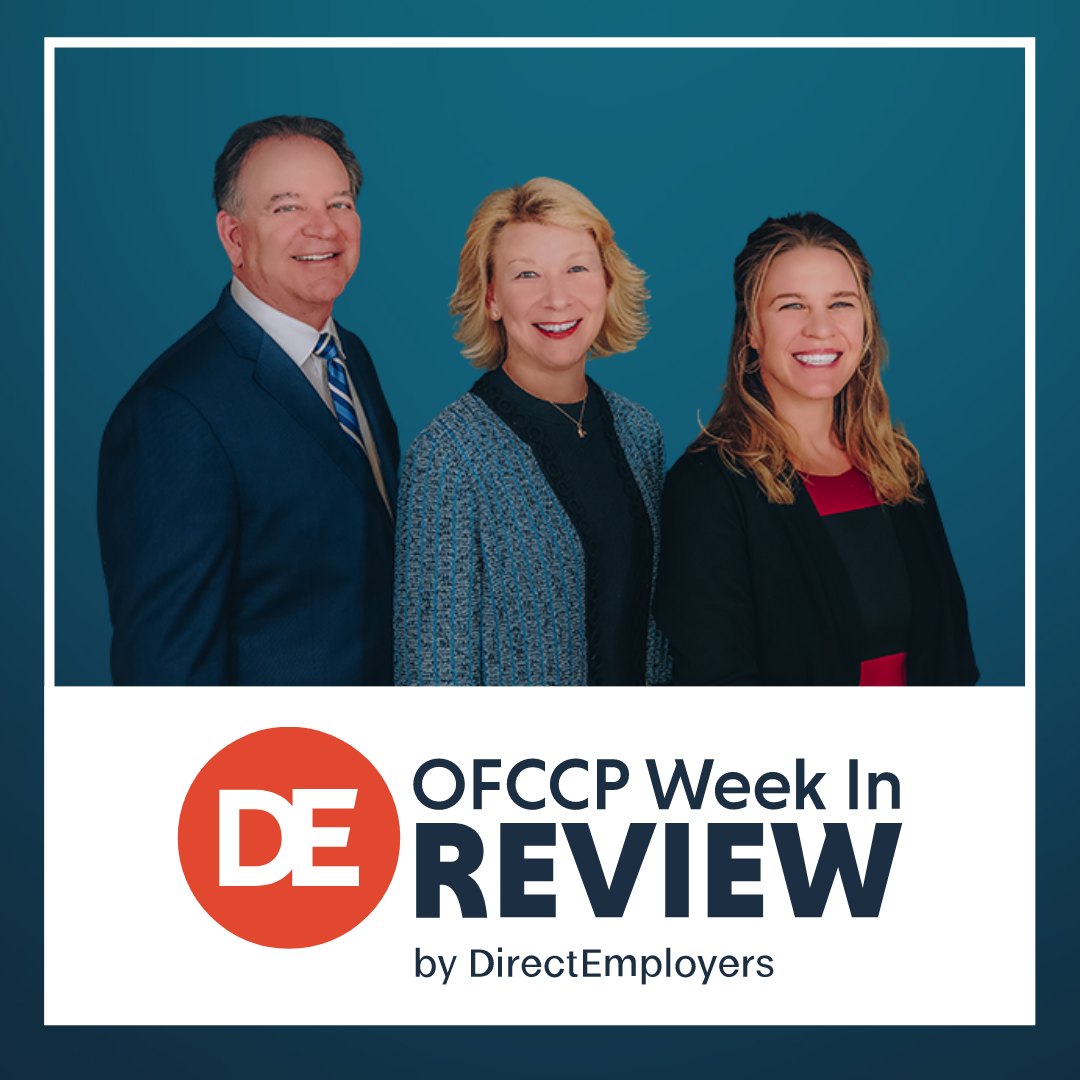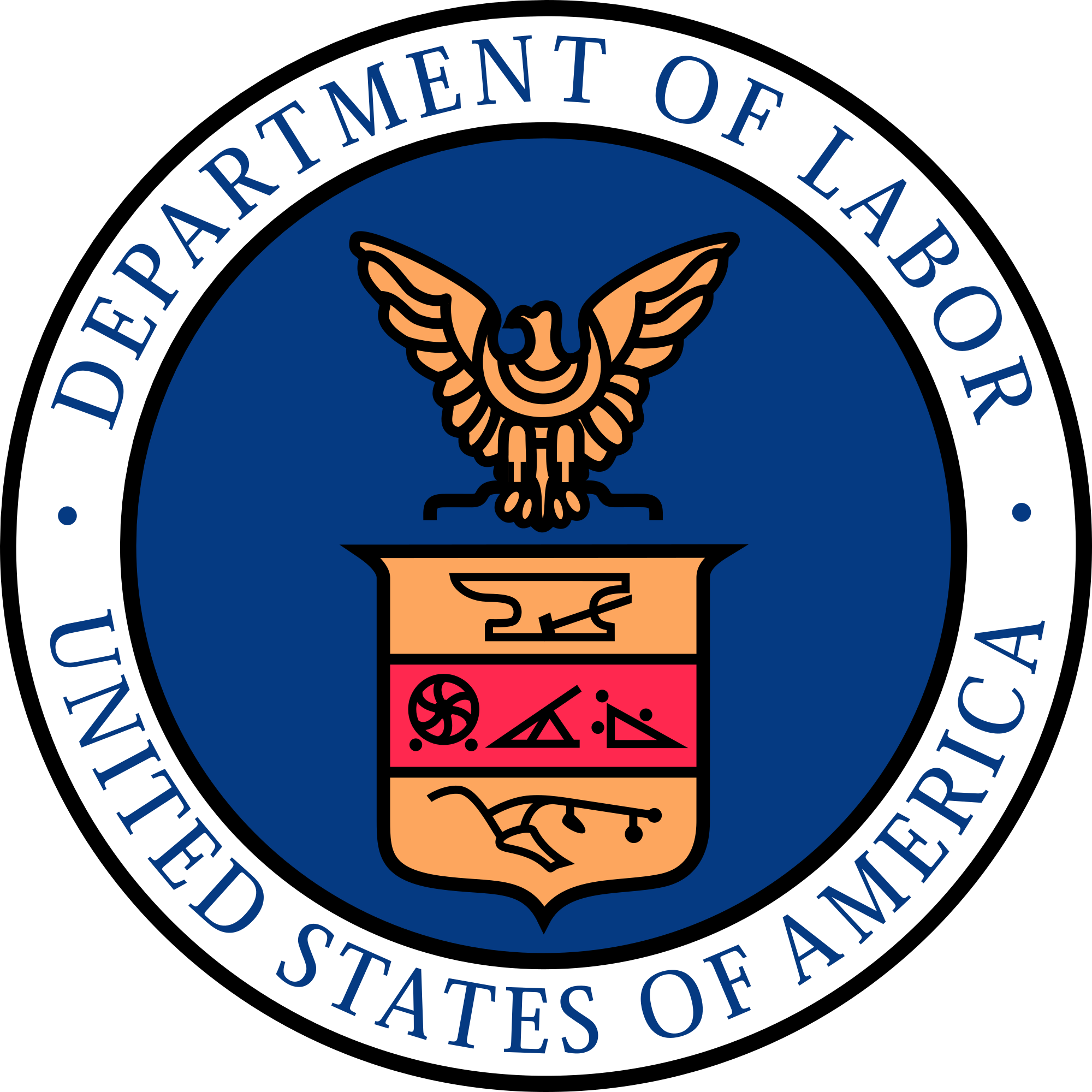 The DE OFCCP Week in Review (WIR) is a simple, fast and direct summary of relevant happenings in the OFCCP regulatory environment, authored by experts John C. Fox, Candee Chambers and Jennifer Polcer. In today’s edition, they discuss:
The DE OFCCP Week in Review (WIR) is a simple, fast and direct summary of relevant happenings in the OFCCP regulatory environment, authored by experts John C. Fox, Candee Chambers and Jennifer Polcer. In today’s edition, they discuss:
- This Week’s Vaccination Injunction Puzzle at a Glance
- A Missing EEO is the Law Notice Will Now Cost An Employer $610 Per Violation
- $113 Million Now Available Through The Apprenticeship Building America Grant Program
- Cornell & USDOL’s Women’s Bureau Kicked off the “Equity in Focus” Series with a Powerful Panel Tackling “Job Creation for a Just Society”
- Unemployment Rate for Individuals with a Disability Decreased in 2021, However, Remains Higher than 2019 Rate
This Week’s Vaccination Injunction Puzzle at a Glance:
Current Status:
There were no significant developments this week as to the four federal vaccination mandates we are following. For the latest status, see our WIR last week.
Wednesday, February 23, 2022: A Missing EEO is the Law Notice Will Now Cost An Employer $610 Per Violation

History of Adjustments
- 2021 from $525 to $576 per violation
- 2016 from $210 to $525 per violation
- 2014 from $110 to $210 per violation
- 1997 from $100 to $110 per violation
EEO Is The Law Notice
The required poster is available on the EEOC website in English, Spanish, Arabic, Chinese, and an optimized version for screen readers.
Note: Versions older than 2002 require a supplement posting which includes (among other things) discrimination protection for individuals with disabilities and protected veterans for federal Government contractors and subcontractors.
Wednesday, February 23, 2022: $113 Million Now Available Through The Apprenticeship Building America Grant Program

- See our report from February 2021, “Biden Administration Pulls Back on Industry Designed Apprenticeship Programs to Drive Apprenticeships Back to Union-Supported Registered Apprenticeship Programs.”
The grants aim to support an equitable post-pandemic economic recovery by connecting Americans to good quality jobs in priority industry sectors, including critical supply chain industries, and among populations disproportionately affected by the pandemic.
The Plan
Using a coordinated national investment strategy, the ABA will strengthen and modernize the RAP system, increase equity and accessibility in program delivery to apprentices, bring the Registered Apprenticeship model to more industries, and improve RAP completion rates for underrepresented populations and underserved communities.
Grant recipients will work with various partners to support and develop the Registered Apprenticeship ecosystem. Specific goals include the expansion of RAP opportunities for the youth and ensuring equitable RAP pathways through pre-apprenticeship leading to RAP enrollment and equity partnerships
Eligible Grant Recipients
- nonprofits,
- labor organizations,
- public and state institutions of higher education, and
- county governments.
Finalists will receive awards from $1 to $8 million.
Read more about the department’s broader efforts to connect career seekers with apprenticeship opportunities and expand apprenticeship into new sectors and industries through the dedicated webpage, https://www.apprenticeship.gov.
On A Related Note
The Partnership on Inclusive Apprenticeship released a podcast, “How Inclusive Apprenticeship Drives Performance.” In the podcast, David Dame, Director of Accessibility at Microsoft, discusses the unique skills and perspectives that people with disabilities bring to the workplace. He also addresses how inclusive apprenticeship helps build diverse and inclusive, high-performing teams.
Thursday, February 24, 2022: Cornell & USDOL’s Women’s Bureau Kicked off the “Equity in Focus” Series with a Powerful Panel Tackling “Job Creation for a Just Society”
Cornell’s ILR Worker Institute, in collaboration with the U.S. Department of Labor Women’s Bureau, kicked off a new webinar series titled “Equity in Focus.” The first in the series, “Job Creation for a Just Society,” explored different sectors of the economy, bridging theory with practice in discussing how best to advance an equity lens in public investments.
The webinar examined equity in employment, focusing on policies that ensure women and communities of color are not left out of economic opportunities. Several speakers showcased new endeavors that create a pathway for success for women in the construction industry.
Featured speakers included:
- Alexander Colvin, Dean, ILR School, Cornell University
- Wendy Chun-Hoon, Director, Women’s Bureau, Department of Labor
- Roberta Reardon, New York State Secretary of Labor
- Andrea Flynn, Senior Director, Insight Center
- Kelly Kupcak, Executive Director, Oregon Tradeswomen
- Leah Rambo, Director of Training, Smart SM, Local Union 28
- Raahi Reddy, Director, Metro’s Diversity, Equity and Inclusion Program
- Katelyn Walker Mooney, Director, Good Jobs Initiative*, Department of Labor
- Anne Marie Brady, Senior Extension Associate – Director of Research for Worker Rights and Equity, The Worker Institute
*See our report from January “USDOL Launched “Good Jobs” Initiative.”
The Worker Institute will produce an Innovation and Jobs Creation report sponsored by the Lois Gray Innovation Fund at the end of the series. All presentations will be included.
For more information, see the sister blog from the Women’s Bureau, “Building Back Better: Centering Equity and Inclusion in Job Creation and Economic Development.”
On A Related Note
On March 9th, the U.S. Department of Labor’s Office of Federal Contract Compliance Programs, Women’s Bureau, Wage and Hour Department, and Occupational Safety and Health Administration will host an educational and empowerment panel discussion to learn about women’s employment opportunities in the construction industry.
Thursday, February 24, 2022: Unemployment Rate for Individuals with a Disability Decreased in 2021, However, Remains Higher than 2019 Rate

Among individuals with a disability, the jobless rates across races in 2021 were:
- 1% for Blacks and Hispanics
- 3% for Whites
- 5% for Asians
The rates for Whites, Asians, and Hispanics decreased from 2020 to 2021, while the rate for Blacks showed little change.
Significant Stats from the 2021 Summary
- Half of all individuals with a disability were age 65 and over, nearly three times higher than the share for those with no disability.
- Across all educational attainment groups, unemployment rates for individuals with a disability were higher than those with no disability.
- 29% of workers with a disability were employed part-time, compared with 16% for those with no disability.
- 9.6% of employed individuals with a disability were self-employed, compared to 6.4% of employed individuals with no disability.
- The proportion of individuals employed in government was about the same for individuals with a disability (13.9%) and individuals without a disability (13.6%).
Industry Stats
In 2021, individuals with a disability were more likely than individuals with no disability to:
- work in service occupations (18.2% compared to 15.9%)
- work in production, transportation, and material moving occupations (14.6% compared to12.6%)
- work in sales and office occupations (21.4% compared to 19.7%).
Individuals with a disability were less likely than individuals with no disability to:
- work in management, professional, and related occupations (36.5% compared to 42.7%).
The Data Source
The BLS collects this information as part of the Current Population Survey (CPS), a monthly sample survey of about 60,000 households that provides statistics on employment and unemployment in the United States. Collection of the data on persons with a disability is sponsored by the Department of Labor’s Office of Disability Employment Policy.
THIS COLUMN IS MEANT TO ASSIST IN A GENERAL UNDERSTANDING OF THE CURRENT LAW AND PRACTICE RELATING TO OFCCP. IT IS NOT TO BE REGARDED AS LEGAL ADVICE. COMPANIES OR INDIVIDUALS WITH PARTICULAR QUESTIONS SHOULD SEEK ADVICE OF COUNSEL.
SUBSCRIBE.
Compliance Alerts
Compliance Tips
Week In Review (WIR)
Subscribe to receive alerts, news and updates on all things related to OFCCP compliance as it applies to federal contractors.
OFCCP Compliance Text Alerts
Get OFCCP compliance alerts on your cell phone. Text the word compliance to 55678 and confirm your subscription. Provider message and data rates may apply.

